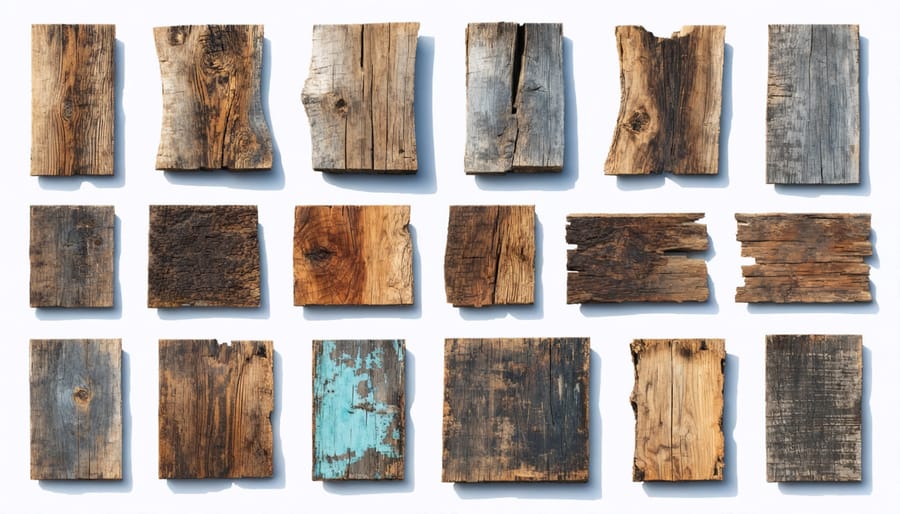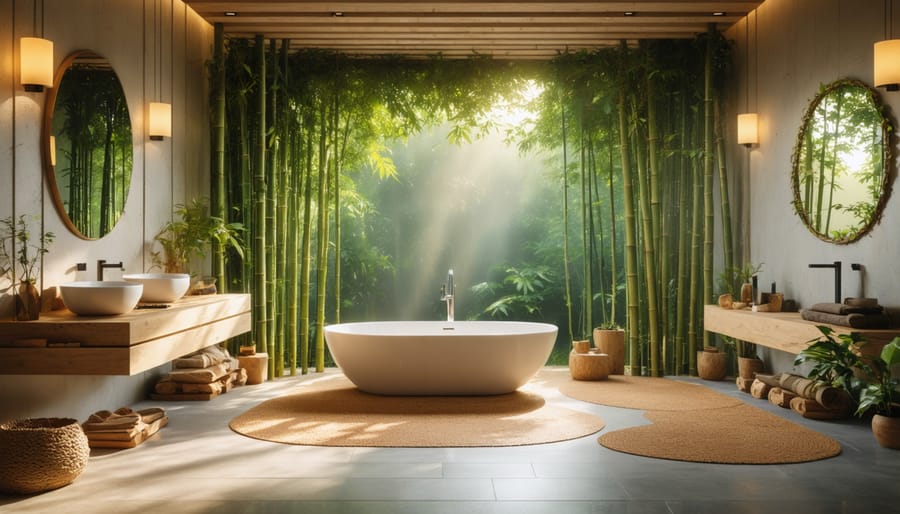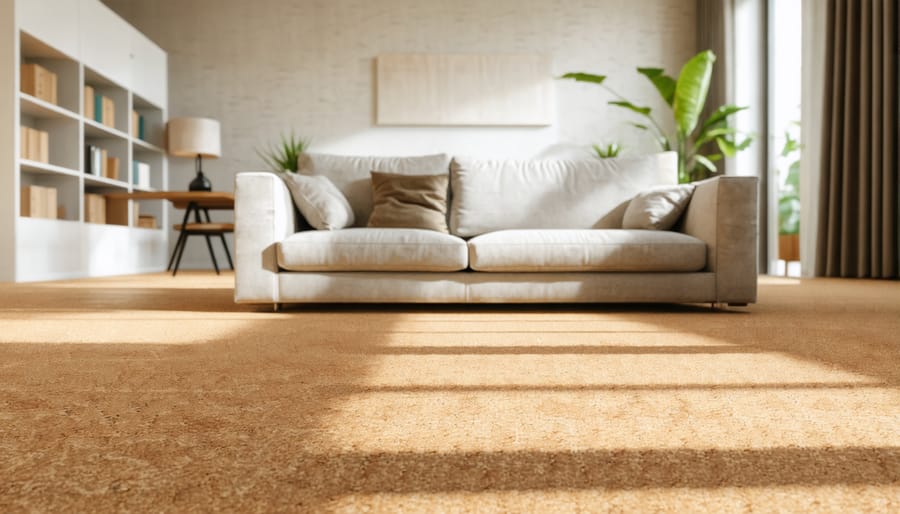Transform your living space into an eco-conscious haven with simple, sustainable DIY projects that reduce waste, save money, and protect our planet. From turning mason jars into stylish light fixtures to crafting natural cleaning solutions using kitchen ingredients, eco-friendly DIY empowers you to make a meaningful environmental impact while expressing your creativity.
Creating sustainable home improvements doesn’t require specialized skills or expensive materials. Repurpose wooden pallets into vertical gardens, convert old furniture into statement pieces using non-toxic paints, or design a composting system from recycled containers. These projects not only minimize your carbon footprint but also add unique, personalized touches to your home.
Whether you’re a seasoned DIY enthusiast or just starting your sustainability journey, eco-friendly projects offer endless possibilities for every skill level and budget. By choosing reclaimed materials, natural ingredients, and energy-efficient solutions, you’ll join a growing community of conscious creators making beautiful, environmentally responsible choices for their homes and the planet.
Let’s explore practical, planet-friendly projects that prove style and sustainability go hand in hand.
Sustainable Materials for Your DIY Projects

Reclaimed Wood Projects
Transforming reclaimed wood into beautiful home pieces is one of the most rewarding creative upcycling ideas you can tackle. Start by sourcing materials from local demolition sites, salvage yards, or online marketplaces – just make sure to get proper permission first. Old barns, warehouses, and retired shipping pallets are excellent sources of character-rich wood that’s perfect for DIY projects.
Before diving in, carefully inspect your reclaimed wood for nails, screws, and any signs of rot or pest damage. Clean the wood thoroughly with a wire brush and mild soap solution, then let it dry completely. For indoor projects, consider treating the wood with a natural sealant to prevent any unwanted surprises.
Ready to get started? Here are some beginner-friendly project ideas:
– Create a rustic floating shelf using a single weathered beam
– Build a farmhouse-style coffee table with pallet wood
– Design a statement wall with mixed wood pieces
– Craft picture frames from old fence boards
– Construct a simple boot rack for your entryway
Remember to wear appropriate safety gear when working with reclaimed wood, including safety glasses and a dust mask. Start with smaller projects to build your confidence and skills before tackling larger pieces. The natural variations in reclaimed wood mean each project will be uniquely yours, telling its own story of sustainability and creativity.
Recycled Glass and Metal Applications
Transform everyday glass and metal items into stunning home decor pieces with these creative upcycling ideas. Wine bottles can become elegant vases or unique pendant lights with simple modifications – just remove labels, clean thoroughly, and consider frosting the glass using etching cream for a sophisticated look. Mason jars make perfect organizers, candle holders, or even bathroom storage solutions when mounted on reclaimed wood.
For metal upcycling, tin cans offer endless possibilities. Paint them in coordinating colors to create modern planters for your herb garden, or punch decorative patterns into them for magical outdoor lanterns. Old silverware can be transformed into unique hooks, garden markers, or even whimsical wind chimes.
Here’s a quick weekend project: Create a mosaic table top using broken glass pieces from bottles or old mirrors. Simply arrange the pieces in a pattern, secure them with tile adhesive, and grout the spaces between. Remember to wear protective gear and handle sharp edges carefully.
Metal bottle caps can become quirky coasters or decorative frames when arranged in patterns. For larger metal pieces, consider turning old cookie tins into vintage-style storage boxes, or repurpose metal filing cabinets into industrial-chic garden tool storage.
Expert tip: Before starting any glass or metal project, always sand down sharp edges and use appropriate safety equipment, including protective eyewear and gloves. When working with glass, a glass cutter tool will help achieve cleaner, safer cuts.
Kitchen Transformation Projects
Sustainable Countertop Creation
Transform your kitchen or bathroom sustainably with these eco-friendly countertop ideas that combine style with environmental responsibility. Using recycled materials not only reduces waste but also creates unique, conversation-starting surfaces that reflect your commitment to sustainability.
One popular option is creating a concrete countertop using recycled glass aggregates. Collect colored glass bottles, break them down safely into small pieces, and mix them with eco-friendly concrete to create a terrazzo-like effect. The result is a durable, eye-catching surface that gives discarded materials new life.
Another creative approach involves salvaged wood. Source reclaimed timber from local demolition sites or salvage yards, then treat it with natural oils and sealants. Join the pieces carefully, sand them smooth, and finish with food-safe beeswax for a warm, rustic countertop that tells a story.
For a modern look, consider repurposed paper composite countertops. Shred paper waste and mix it with natural resins to create a solid surface material. Once compressed and sealed, these countertops are surprisingly durable and water-resistant, while showcasing flecks of color from the original paper materials.
Pro tip: Before starting your countertop project, ensure your base cabinets can support the weight of your chosen material. Also, pay special attention to sealing and waterproofing, particularly in wet areas.
Remember to source materials locally when possible, and always use low-VOC sealants and adhesives to maintain the project’s eco-friendly integrity. With proper planning and execution, your sustainable countertop will serve as both a functional surface and a testament to creative recycling.

Cabinet Renewal Techniques
Transform your kitchen or bathroom cabinets sustainably with these eco-friendly renewal techniques that give new life to old surfaces. Start by thoroughly cleaning your cabinets with a mixture of vinegar and water, avoiding harsh chemical cleaners that can harm the environment and your health.
For a fresh look, consider using zero-VOC paint or natural milk paint, which are free from harmful chemicals and provide excellent coverage. Before painting, lightly sand the surfaces with recycled sandpaper and apply a natural primer made from whiting and water-based binder. Apply thin coats of paint using bamboo or recycled synthetic brushes for the best results.
Another earth-friendly option is refinishing with tung oil or linseed oil. These natural oils penetrate the wood, protecting it while enhancing its natural beauty. Apply multiple thin coats, allowing each to dry completely for a durable finish that’s easy to maintain.
For cabinet hardware, look for recycled or upcycled options at architectural salvage stores. You can also refresh existing hardware by cleaning it with natural solutions or giving it new life with non-toxic metal paint.
Consider adding eco-friendly contact paper made from recycled materials for a temporary update. This option works well for renters or those wanting to test a new look before committing to a permanent change.
To protect your renewed cabinets, make your own natural wood polish using a mixture of olive oil and lemon juice. This homemade solution keeps the surfaces looking fresh while avoiding synthetic chemicals typically found in commercial products.
Remember to properly dispose of any leftover materials and recycle what you can, keeping your cabinet renewal project as environmentally conscious as possible.

Bathroom Eco-Upgrades
Natural Tile Alternatives
Looking to create stunning tile patterns without the environmental impact of traditional materials? Natural tile alternatives offer a sustainable and creative solution for your home improvement projects. Let’s explore some eco-friendly options you can craft yourself.
Cork tiles are an excellent choice for both flooring and wall applications. Simply cut cork sheets into your desired tile shapes, seal them properly, and install using natural adhesives. They’re not only sustainable but also provide excellent insulation and sound dampening properties.
Reclaimed wood tiles offer a rustic charm while giving new life to old materials. Create unique patterns by cutting salvaged wood into uniform squares or interesting geometric shapes. Sand them smooth, apply an eco-friendly finish, and arrange them in eye-catching designs.
For a truly natural look, consider making tiles from compressed bamboo. This fast-growing material can be sliced into thin sections and formed into tiles using natural binding agents. The result is durable, water-resistant, and beautifully unique.
Clay tiles made from local earth materials offer another sustainable option. Mix clay with natural fibers, press into molds, and allow to air dry before firing. While this process requires patience, the end result is completely natural and uniquely yours.
Remember to seal your natural tiles appropriately using eco-friendly sealants to ensure longevity. Each of these alternatives brings its own character to your space while reducing environmental impact. Start with a small project to practice your technique before tackling larger areas.
Water-Saving Fixtures
Transforming your home into a water-efficient haven doesn’t have to be complicated or expensive. With a few simple DIY installations, you can significantly reduce your water consumption while keeping your utility bills in check.
Start with your faucets by installing aerators, which mix air with water to maintain pressure while using less water. These small devices cost just a few dollars and can be installed in minutes using basic tools. Simply unscrew your old aerator, clean the threads, and screw on the new one – it’s that easy!
In your bathroom, consider upgrading to a dual-flush toilet converter kit. This DIY project takes about 30 minutes and can save thousands of gallons annually. The kit replaces your existing flush mechanism with one that offers two options: a light flush for liquid waste and a full flush for solid waste.
Another impactful project is installing a low-flow showerhead. Modern versions provide excellent pressure while using up to 40% less water. Installation typically requires nothing more than plumber’s tape and a wrench. Pro tip: Choose a showerhead with adjustable flow patterns to customize your shower experience.
For outdoor spaces, consider creating a rain barrel system to collect rainwater for garden use. Connect your downspout to a food-grade barrel fitted with a spigot and overflow valve. Add a mesh screen on top to keep out debris and mosquitoes. This simple setup can provide free water for your plants throughout the growing season.
Remember to check for leaks after any installation and keep track of your water bills to see the impact of your eco-friendly upgrades.
Living Space Projects
Natural Insulation Solutions
Looking to make your home more energy-efficient while staying eco-conscious? Let’s explore some natural eco-friendly insulation methods you can implement yourself. These DIY solutions not only help regulate your home’s temperature but also reduce your carbon footprint and energy bills.
Start with draft-proofing windows using recycled denim strips or cotton fabric. Simply cut the material to size and create a tight seal around window frames. For doorways, craft your own draft excluders by filling old cotton pillowcases with dried rice or beans – they’re both effective and decorative!
Cork panels make excellent wall insulators and are completely sustainable. Cut cork sheets to size and attach them to interior walls using natural adhesive. For attic spaces, consider laying down sheep’s wool insulation – it’s renewable, biodegradable, and naturally fire-resistant.
Another clever solution is creating thermal curtains using multiple layers of natural fabrics. Combine cotton, wool, or hemp materials with an insulating middle layer of thick felt. These curtains work wonders in keeping rooms warm in winter and cool in summer.
Don’t forget about floor insulation! Create cozy rugs from old wool sweaters by cutting them into strips and weaving them together. For bigger spaces, install cork flooring tiles – they’re natural insulators and feel warm underfoot.
Remember to seal any visible gaps around pipes and electrical outlets using natural putty or beeswax. These small improvements add up to significant energy savings while maintaining your commitment to sustainable living.
Last tip: Consider growing climbing plants like ivy on external walls – they create a natural insulating barrier and add beauty to your home’s exterior.
Sustainable Flooring Options
Creating an eco-friendly floor doesn’t mean sacrificing style or durability. Let’s explore some amazing sustainable flooring solutions you can tackle as a DIY project.
Cork flooring is a fantastic option that’s both renewable and comfortable underfoot. To install, simply clean your subfloor thoroughly, lay down a moisture barrier, and click-lock the cork panels together. The best part? Cork is naturally antimicrobial and harvested without harming the trees.
Reclaimed wood flooring brings character to your space while giving old materials new life. Visit local salvage yards or architectural salvage stores to source your materials. Clean the boards thoroughly, check for nails, and sand them before installation. A water-based polyurethane sealer will protect your floor while keeping VOC emissions low.
Bamboo flooring installation is similar to hardwood but offers superior sustainability since bamboo reaches maturity in just 5-7 years. Choose strand-woven bamboo for maximum durability, and ensure you let the materials acclimate to your home’s environment for at least 48 hours before installation.
For a unique approach, consider creating a paper bag floor. This innovative technique involves torn brown paper bags, wood glue, and water-based polyurethane. While it sounds unconventional, the result resembles leather and costs mere pennies per square foot.
Remember to choose low-VOC adhesives and finishes for any flooring project. Allow proper ventilation during installation, and always wear appropriate safety gear. These sustainable options not only look beautiful but also contribute to a healthier planet and home environment.

As we’ve explored throughout this guide, eco-friendly DIY projects offer far more than just environmental benefits. They provide an opportunity to create a more sustainable, healthier living space while expressing your creativity and potentially saving money in the long run. By choosing sustainable materials, upcycling existing items, and implementing energy-efficient solutions, you’re not just improving your home – you’re contributing to a better future for our planet.
The beauty of eco-friendly DIY projects lies in their accessibility. Whether you’re a seasoned craftsperson or just beginning your sustainable journey, there’s always a project that matches your skill level and budget. From simple upcycled décor pieces to more complex renewable energy installations, each project brings you one step closer to a more sustainable lifestyle.
Remember that sustainable home improvement isn’t about perfection – it’s about progress. Start small with basic projects like creating natural cleaning solutions or setting up a composting system. As your confidence grows, you can tackle more ambitious projects such as installing solar-powered lighting or creating furniture from reclaimed materials.
The financial benefits of eco-friendly DIY projects often become apparent over time through reduced utility bills, decreased maintenance costs, and improved home value. Moreover, the satisfaction of creating something beautiful and functional while minimizing environmental impact is truly priceless.
We encourage you to take what you’ve learned here and start your own sustainable renovation journey. Begin with a project that excites you, and don’t be afraid to make mistakes – they’re valuable learning opportunities. Share your experiences with others, seek advice from the DIY community, and celebrate your achievements, no matter how small they may seem.
By choosing eco-friendly DIY projects, you’re not just creating a more beautiful home – you’re investing in a more sustainable future. So grab your tools, gather your materials, and take that first step toward a greener, more personally crafted living space.
